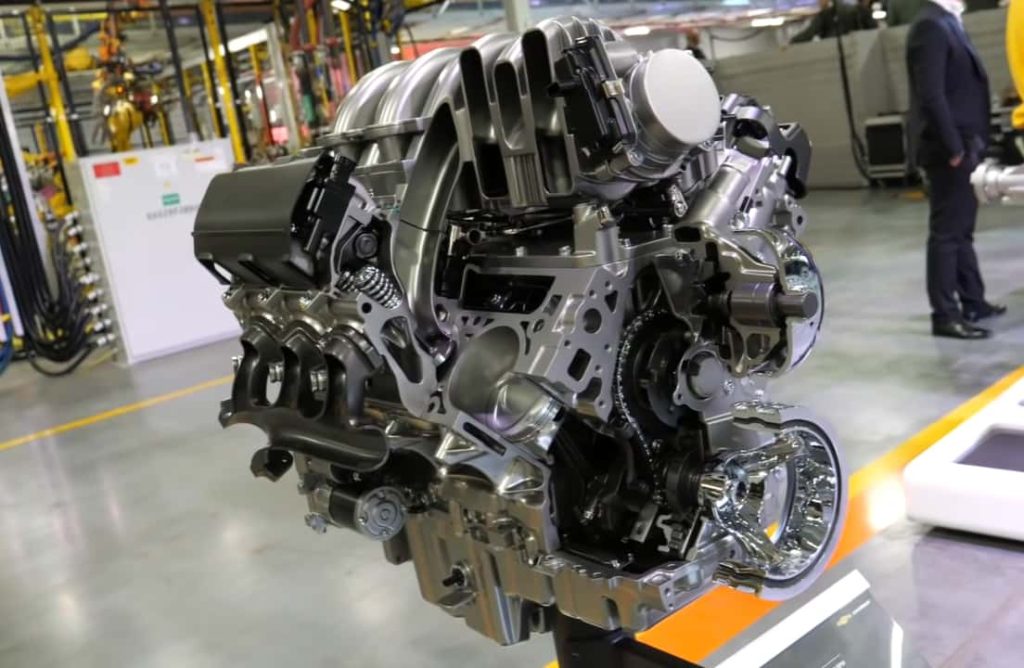Are you worried about some GM 6.6 gas problems you are encountering?
Gas issues can happen to any car no matter what make or model. Wth GM, the best-selling vehicles are the Sierra and the Silverado because of their robust engines. In fact, GM updated the engines and added more features such as the torque capacity and horsepower in their 6.6-liter gas engine.
As for the 6.6L L8T by GM, it is a fifth generation V8 small block engine. This is basically suitable for heavy duty purposes. The gas engine is often used in the Silverado 2020 models and above, as well as the Sierra 2020 models and more recent ones.
While the engine is durable, there are some common issues that come along. We will talk more about these problems and what you can do about them. Let’s get started.

Contents
GM 6.6 Gas Problems
There are a few concerns linked with the GM 6.6 gas engine. Here they are:
1. Insufficient horsepower
The Duramax 6.6 and the GM 6.6 are both robust engines but are not quite the same. There is less horsepower in the GM 6.6, as compared to the Duramax 6.6. Hence, there is a greater towing capacity by the Duramax.
With that being said, Duramax 6.6 is a better choice if you prefer an engine with more horsepower. Furthermore, there is more comfort and ease to be expected from a higher-horsepower truck.
There are ways to go about it if you wish to boost your GM 6.6 gas engine. With proper maintenance and upgrades, you can make this happen. Among the things you can do for an upgrade are:
- Installing a new exhaust system
- Upgrading your air filter equipped with a cold air intake
- Installing a high-quality engine tuner
- Performing a tune-up
- Installing a turbo kit or supercharger
- Cleaning your fuel injector
By doing all of these, you can significantly improve the horsepower of your gas engine. So, you no longer have to worry if you have heavier loads to tow.
2. Reduced acceleration
A vehicle’s performance is largely affected by its acceleration. When your vehicle produces more horsepower, it can also accelerate better. With the GM 6.6 gas engine, the accelerator is a tad slower than 6.6 diesel engines.
This is because of a weaker gas accelerator, taking 9.06 seconds to accelerate. For the 4WD mode, it takes about 9.23 seconds unlike the 8 seconds for the 6.6 diesel. This is why you can easily observe a reduced power level when you drive on the highway.
Thankfully, there are ways to improve the acceleration of your 6.6 gas engine. These include ECU tuning, re-gearing, improving the aerodynamics, reducing the weight of your vehicle, setting up a cold air intake, and installing a throttle response controller.
However, we do not recommend applying these changes if you lack some expert skills on how to do these. You can hire a specialist or mechanic who has experience in doing these tasks.
3. Transmission speed issues
Another thing to keep in mind is that the GM 6.6 gas features a 6-speed auto transmission system. On the other hand, its competitors are equipped with either an 8-speed or even a 10-speed transmission. This explains the lag in the transmission speed for the GM 6.6 has compared with the competitors.
So, if this seems insufficient for you, you can change your transmission system and get it up to 8 or 10-speed. But do keep in mind that this is a very expensive and labor-intensive project. This is why we do not recommend it unless you are willing to shell out a lot of money on it.
4. Reduced towing capacity
With the reduced horsepower of the GM 6.6 gas engine, this also explains some towing issues. For instance, the towing capacity of the GM 6.6 is 14,500 lbs while the competitor’s is at 18,500 lbs. This puts the gas engine far behind and tends to lag when you need to drive around with a heavy load.
One thing you can do, however, is to increase the horsepower. By doing so, you can also observe a minimal towing capacity increase by at least 1000 lbs. This is the only solution that you can try.
5. Knocking sound coming from the engine
There have been some complaints about an audible knocking sound coming from the engine of many GM 6.6 gas vehicles. This usually happens after the engine has been turned off. Some drivers assume it is due to bad lifters of their valve spring. However, it cannot be farther from the truth.
Generally, the GM 6.6 gas engine comes with an oil capacity of 8 quarts. So, if there is less than this capacity, there will be more knocking noise to be heard. Other common triggers include the use of semi-synthetic and mineral engine oil.
Unfortunately, you cannot stop the noise completely. But you can minimize it by using fully-synthetic engine oil, using SAE 5W-40 type of engine oil, and putting 8 quarts of oil – no more, no less.
Once you drive for about 12000 to 15000 miles, you should no longer be able to hear any knocking sound.
6. Poor gas mileage
Lastly, the GM 6.6 gas engine also has some poor gas mileage issues. With less torque, towing capacity and horsepower, the gas mileage is also lower than its competitors. This is why it is better to drive in the 2WD mode and avoid the 4WD mode if you can. This is because the 4WD uses up more gas.
Moreover, you need to ensure a timely change of the air filter and oil filter to enhance the mileage.
Read More: Causes And Fixes For A DEF Gauge Not Working
Conclusion
We hope this post has been helpful in determining the issues with the GM 6.6 gas engine. Now, you are aware of these concerns and some solutions to be done about these.